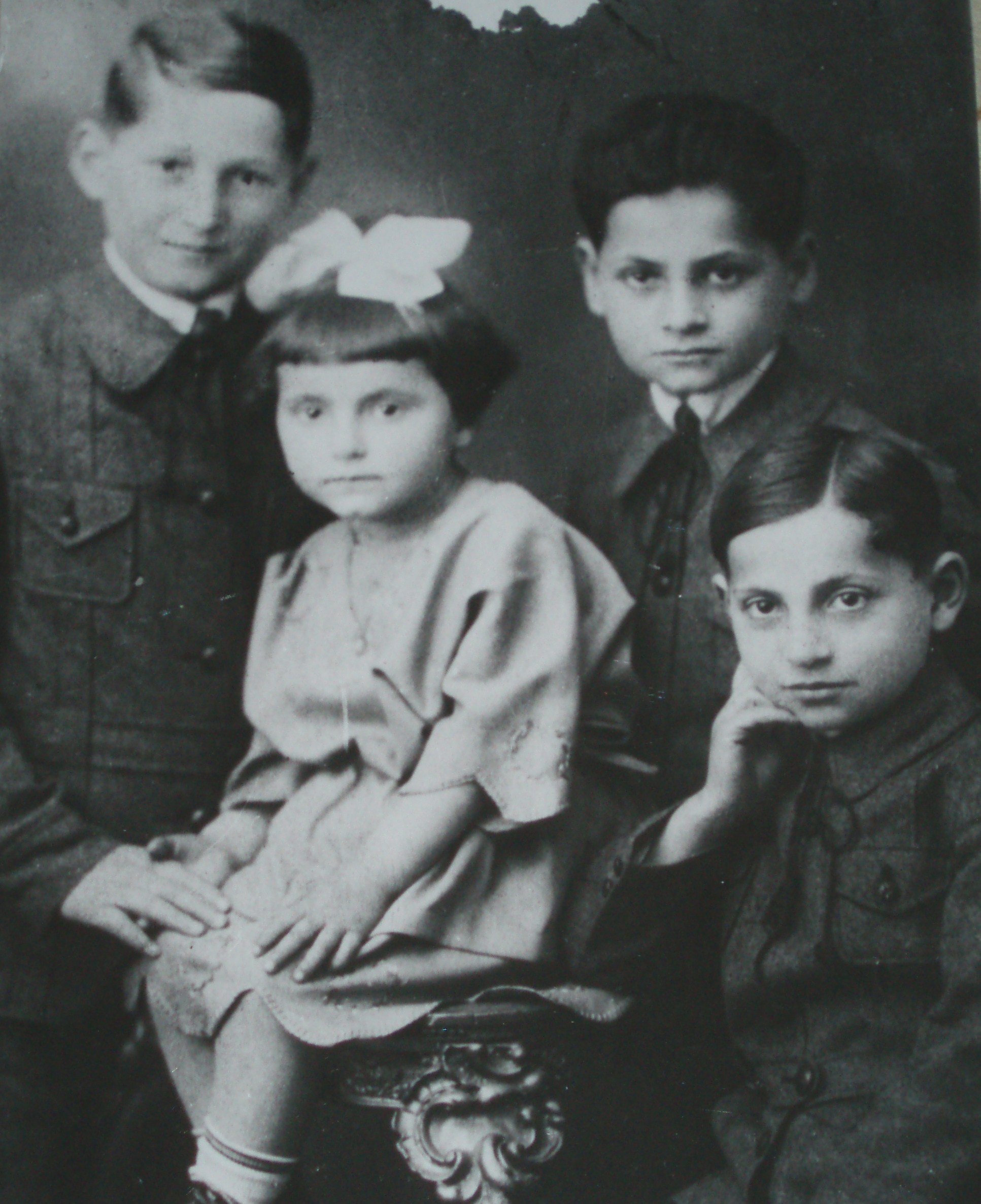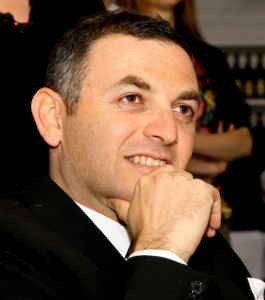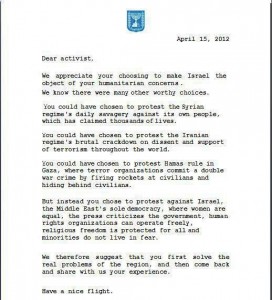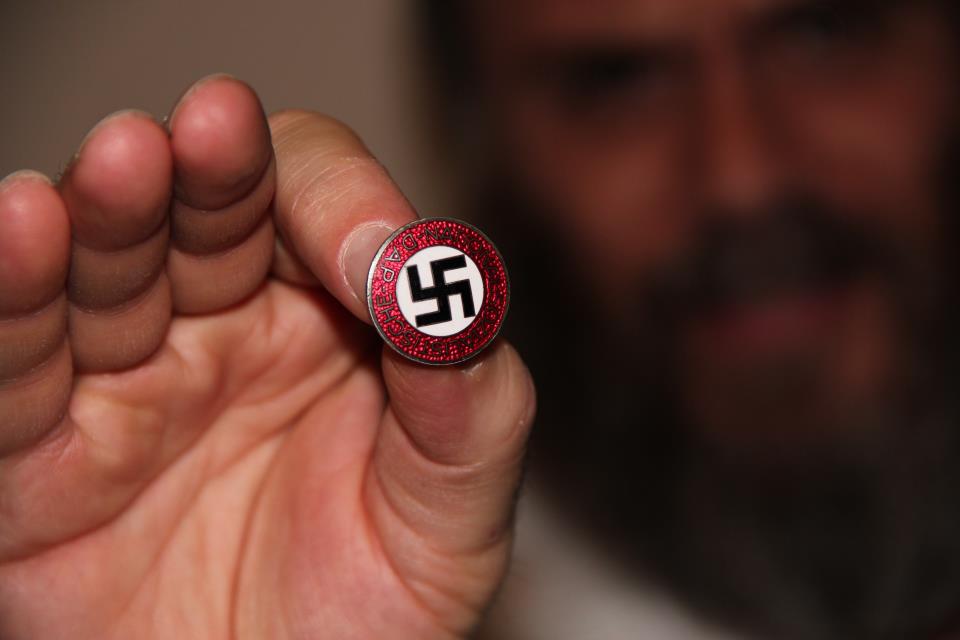CATEGORY: English
The amazing story of Marko Feingold
When I asked Marko ‘Max-Mordechai’ Feingold, the President of the Jewish Community in Salzburg, about his feelings after lying a “Stolperstein” carrying the name of another Nazi-victim, the old man just put his hands on the left chest, as saying: “my heart stops beating for a moment”. This was the 150th time his heart lacked this very heartbeat since he initiated the project in his hometown in 2005. Not the healthiest thing to do when you are a Holocaust survivor and you approach the age of 99. But Feingold does not care.


BONO leaves a thought of peace in the Guestbook of the King David Hotel in Jerusalem

“Hope is like a faithful dog, sometimes she runs ahead of me to check the future, to sniff it out and then I call to her: Hope, Hope, come here, and she comes to me. I pet her, she eats out of my hand and sometimes she stays behind, near some other hope maybe to sniff out whatever was. Then I call her my Despair. I call out to her. Here, my little Despair, come here and she comes and snuggles up, and again I call her Hope.
With great thanks for great room in great hotel in great city, Bono.”
An officer, not a gentleman

Lieutenant Colonel Shalom Eisner is a soldier’s soldier. The guy is a deputy commander of the Jordan Valley brigade in the Israeli army, an armored brigade trained to fight other armies, head to head, face to face. His whole life he’s been preparing to take on Syrian and Iraqi armored formations, not Danish peace activists.
The blow that Eisner delivered to the ISM activist is a Krav Maga blow that recruits are taught in their first week of basic training. It’s what you’re supposed to do if you’re face to face with your enemy; it’s what you’re trained to do if you find yourself in hand to hand combat, when the bullets are out, or you’re too close to your enemy to shoot, if the enemy and you are at each other’s throats, on death ground, and there is nothing left to do but fight for your life. It’s a last-ditch move you perform on Syrian troops, Hezbollah guerrillas, Hamas gunmen. It’s not a move you pull against unarmed activists, no matter how provocative they are. Eisner’s life was not in danger. At most, his fingers were fractured. He was pissed off and he lost his cool. But he shouldn’t have even been there in the first place. READ MORE
Israel 2030: A hard look at the hard numbers

If demographic trends remain the same, the percentage of Israelis participating in the workforce is expected to decline by 6 percent in the next 20 years, according to a new report titled “Changes in the structure and composition of the Israeli population according to cultural – religious sectors in the coming twenty years and their consequences on the labor market.”
The report, dated November 2011, was issued this week [April 9] by the Research & Economics Administration of the Industry, Trade and Labor Ministry, and predicts Israel’s demographic composition for the next 20 years and its expected impact on the workforce.
The findings were based on new demographic statistics compiled by Dr. Eliyahu Ben Moshe for the Research & Economics Administration.
The report shows that:
•Israel’s population growth is expected to decline in the coming 20 years, but will remain high relative to many other countries in the world.
•By 2030 Israel is projected to have 11 million people, and the population density will increase to 450 souls per km, the highest ratio for any developed nation in the world. [This obviously shows the imperative of planning building and zoning new land for housing, as well as long-term planning for transportation and services - AM].
•There will be a steady decrease in the number of people of working-age [15-64] from its current 62% [in 2010] to 59% in 2030.
•This decrease will bring with it serious ramifications for the dependency ratio. Increasingly, every working person will have to support more people through his/her labors.
•The number of Israelis of the primary working age [25-54] is currently at 38%. That’s just over one-third of Israelis who are ‘eligible’ to work by dint of their being within this age group.
•Of the overall percentage of general working age Israelis [15-64], the Haredim currently represent 8.5% and are projected to make up 15.1% of working-age Israelis in 2030.
•Only a drastic decline in the fertility rate can stop this trend.
•The secular sector’s percentage of working age people will drop from its current 36% to 29% in 2030. In 2030, there will be an increase of 1.8 million people in the 15-64 age group, from its current 4.8 million, up to 6.6 million.
•In the primary working age group of [25 - 54], another 900,000 souls will be added – obviously in an unequal proportion between the various religious-cultural sectors of Israeli society. A full one-third of these 900,000 people of working age will come from the Haredi sector, and 38% will come from the Arab sector.
Therefore, if current workforce participation trends continue [especially amongst Haredi men and Arab women] there will be significant consequences for the Israeli economy and the welfare of all of its citizens.
Don’t step on Grass

I think it was a stupid decision to ban Gunter Grass from entering Israel, but I’m not surprised at Interior Minister Eli Yishai’s decision to do it. Our interior minister is a man who sees things in black and white only.
This week, Yishai issued an order making the German writer Persona non Grata in Israel, effectively barring him from the country, for Grass’ poem in a German newspaper, in which the Nobel laureate said Israel’s nuclear program was a danger to world peace.
Grass wrote that he feared a nuclear-armed Israel “could wipe out the Iranian people” with a “first strike.” It’s ridiculous. It’s despicable, uninformed, reflexively anti-Israeli, and most likely anti-Semitic. He doesn’t even pretend to see things from our perspective, to walk in our shoes. It’s a load of bull.
But still, banning him from entering the country reminds me very much of Iran’s death fatwa on Salman Rushdie for his Satanic Verses.
Rushdie, who knows a thing or two about being banned for his writings, tweeted this on Monday:
OK to dislike, even be disgusted by #GünterGrass poem, but to ban him is infantile pique. The answer to words must always be other words.
If you were a teenager and a nazi came to conscript you, and refusal meant death, would you choose to die?
To be a conscript in the Waffen-SS is not to be a Nazi. To be the author of The Tin Drum is to merit great honor.
Let’s not forget that #GünterGrass is the author of the greatest literary responses to Nazism, The Tin Drum, Cat and Mouse, Dog Years.
Swastika Revisited
On the 4th of April 2012, the very day when Günter Grass’s anti-Israeli poem ‘What Must Be Said’ was published, my friend rabbi in Vienna found a Swastika badge in his vacuum cleaner after Pesach cleaning. It happened, of course, by a coincidence; just like by a coincidence is Grass notorious for his SS past; and again, by a coincidence did the owners of the rabbi’s flat left the badge in there. Any attempts of drawing connections here is a sure sight of persecution complex and an unnecessary digging up the past. The problem is that such coincidences take place.
Almost 70 years have passed. Today, when public apologies for Nazi crimes are being tendered on any suitable occassion by people born after the war and klezmer melodies are filling the streets of Berlin and Nuremberg, bringing up any Nazi topic seems to be a moveton, a mockery, a pointless agression. It is forgotten, since all of us wanted to forget it. Yet it’s still there. It is there because the SS soldier considers himself to be impartial enough to voice his opinion on the actions of the Jewish land. It is there also because many Israelis, provoked by Grass’ poem, are immediately starting to recall the past of 84-years old Nobel prize owner and his nation. Finally, it is there because of some people in Vienna, who neither decided to save the Swastika badge as a family relict, nor to get rid of it. It has been lying on the floor of their appartment, waiting till a rabbi find it during a Pesach cleaning. English translation of the poem: here
The Kaufman Critique: Keeping Passover real at McDonald’s

It’s been over a year since the last Kaufman Critique was published. It’s not that I haven’t been to restaurants lately, more of a time issue.
And certainly, writing about McDonald’s isn’t the best comeback post, but hey – maybe it’ll get me back into the food-groove.
Anyway, it’s Pesach. The holiday I hate the most. Because of that whole bread thing. Pointless.
McDonald’s, though, doesn’t agree. And McDonald’s would know. They know a thing or two about… money. So, what do they do during Pesach, when it comes to buns? Well, as you may or may not know – McDonald’s is divided into Kosher and non-Kosher brancיes in Israel. But most of them offer Kosher buns. In fact, they limit the menu to meals with kosher buns. So, you can’t get a Big Mac, for example. You can only get a Royal (Quarter pounder in the States).
But — you can get it with cheese.
So you can keep Kosher, but not really Kosher.
I always find this little ritual that McDonald’s does every year to be very telling of Israeli society. And corporate capitalism, too.
Nonetheless, critique-wise this bun is actually pretty good for a Kosher for Pesach bun. One usually expects something chewy that doesn’t digest well, but here, the McDonald’s scientists have done it again. Light, fluffy – and none of that Pesach smell and aftertaste of the usual dodgy buns. Bravo and Chag Sameach!
As originally posted on: +972



